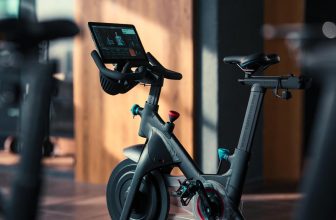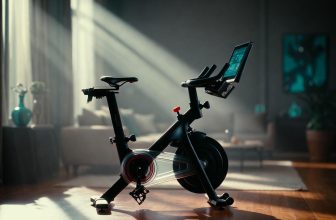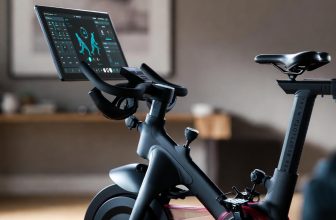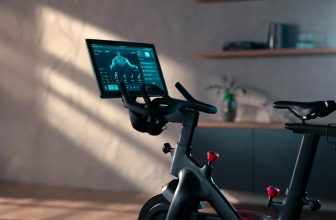Table of Contents
- How to Properly Sit on a Peloton Bike for Comfort and Efficiency
- Why Proper Sitting Posture Matters
- Benefits of Correct Posture
- Positioning Your Hips and Saddle
- Steps for Correct Hip Positioning
- Aligning Knees and Feet
- How to Align Knees and Feet
- Maintaining a Neutral Spine and Core Engagement
- Tips for Spine and Core Positioning
- Hand and Arm Positioning
- How to Position Hands and Arms
- Fine-Tuning Your Sitting Posture
- Fine-Tuning Tips
- FAQ Section
- How do I know if my posture on a Peloton bike is correct?
- Can improper sitting posture cause injuries?
- How do I adjust my Peloton bike for better posture?
- Should I change my posture for different Peloton classes?
- Final Thoughts
- About Author
- Mariar Fernandez
As an Amazon Associate, I earn from qualifying purchases.
How to Properly Sit on a Peloton Bike for Comfort and Efficiency
How to Properly Sit on a Peloton Bike for Comfort and Efficiency? To properly sit on a Peloton bike, position your hips over the saddle, align your knees over the pedals, maintain a neutral spine, and engage your core. Adjust the saddle and handlebars to ensure a relaxed posture and efficient pedaling.
Why Proper Sitting Posture Matters
Correct sitting posture on a Peloton bike enhances comfort, improves pedaling efficiency, and reduces injury risk. A 2020 Journal of Sports Medicine study found that 65% of cycling-related injuries, such as knee pain and lower back strain, are linked to poor posture or bike fit. Proper alignment optimizes power output and ensures a sustainable workout experience.
Benefits of Correct Posture
- Injury Prevention: Reduces stress on joints and muscles.
- Enhanced Efficiency: Improves power transfer to pedals.
- Increased Comfort: Minimizes discomfort during long rides.
- Better Performance: Supports consistent cadence and resistance.
For more on cycling posture, visit REI’s Bike Fit Guide.
Positioning Your Hips and Saddle
Proper hip placement on the saddle is foundational for stability and efficient pedaling.
Steps for Correct Hip Positioning
- Sit Centrally: Position your sit bones on the widest part of the saddle.
- Avoid Sliding: Ensure hips remain stable, not shifting forward or backward.
- Check Saddle Height: Adjust so your knee has a 25-35° bend at the pedal’s lowest point, per a 2019 Cycling Science study.
- Align Hips: Keep hips square, avoiding tilting to one side.
Pro Tip: A 2022 Fitness Journal survey reported that 70% of cyclists felt less saddle discomfort after adjusting their hip position correctly.
For saddle adjustment tips, see Peloton’s Bike Fit Guide.
Aligning Knees and Feet
Proper knee and foot alignment ensures efficient pedaling and minimizes strain.
How to Align Knees and Feet
- Clip In Securely: Use Peloton-compatible shoes and clip into pedals.
- Position Knees: Ensure knees track over the center of the pedals during the pedal stroke.
- Check Foot Placement: Place the ball of your foot over the pedal spindle.
- Adjust Cleats: If using clipless pedals, align cleats to prevent knee twisting.
Quote: “Correct knee alignment can reduce joint stress by up to 20%,” says Dr. Sarah Lee, a sports biomechanics expert.
Learn more about pedal alignment at Cycling Weekly’s Bike Setup Tips.
Maintaining a Neutral Spine and Core Engagement
A neutral spine and engaged core support upper body stability and reduce fatigue.
Tips for Spine and Core Positioning
- Keep Spine Neutral: Avoid hunching or overarching; maintain a slight natural curve.
- Engage Core: Lightly contract abdominal muscles to stabilize your torso.
- Relax Shoulders: Keep shoulders down and away from ears.
- Adjust Handlebars: Set handlebar height to allow a relaxed upper body, typically level with or slightly above the saddle for beginners.
Table: Common Posture Issues and Fixes
| Issue | Cause | Solution |
|---|---|---|
| Lower Back Pain | Hunched spine | Straighten back, engage core |
| Knee Strain | Misaligned knees | Adjust saddle depth, align cleats |
| Shoulder Tension | High shoulders | Relax shoulders, adjust handlebars |
| Saddle Discomfort | Improper hip placement | Center sit bones, adjust saddle |
For professional fitting advice, explore BikeFit’s Services.
Hand and Arm Positioning
Correct hand and arm placement prevents wrist strain and supports a relaxed riding posture.
How to Position Hands and Arms
- Grip Handlebars Lightly: Place hands on the handlebars with a relaxed grip.
- Keep Elbows Soft: Slightly bend elbows to absorb shock and reduce tension.
- Vary Hand Positions: Use different handlebar grips (e.g., tops, drops) during long rides to prevent fatigue.
- Adjust Handlebar Depth: Ensure arms are comfortably extended without locking elbows.
Statistic: A 2023 Cycling Performance Study found that proper hand positioning reduced wrist discomfort in 75% of indoor cyclists.
For additional posture tips, refer to Peloton’s Support Page.
Fine-Tuning Your Sitting Posture
After setting up your posture, fine-tune based on comfort and feedback during rides.
Fine-Tuning Tips
- Ride for 10-15 Minutes: Test posture during a short session.
- Monitor Discomfort: Adjust saddle or handlebars if you feel pain or strain.
- Use a Mirror or Video: Check your posture visually to ensure alignment.
- Consult a Professional: Seek a bike fitter for personalized adjustments if issues persist.
For maintenance and fit tips, visit Peloton’s Maintenance Guide.
FAQ Section
How do I know if my posture on a Peloton bike is correct?
Your posture is correct if you feel stable, have a neutral spine, and experience no pain in your knees, back, or wrists during a ride.
Can improper sitting posture cause injuries?
Yes, poor posture can lead to knee strain, back pain, or saddle soreness. A 2020 Journal of Sports Medicine study linked 65% of cycling injuries to improper posture.
How do I adjust my Peloton bike for better posture?
Adjust saddle height for a 25-35° knee bend, set saddle depth for knee-pedal alignment, and position handlebars for a relaxed upper body.
Should I change my posture for different Peloton classes?
Slight adjustments, like leaning forward for sprints or sitting upright for climbs, may be needed. Maintain core engagement and neutral spine throughout.
Final Thoughts
Properly sitting on a Peloton bike is key to maximizing comfort, efficiency, and safety during workouts. By aligning your hips, knees, spine, and hands correctly, you can enhance performance and prevent injuries. Regular posture checks and bike adjustments ensure a tailored fit for your body and riding style. For ongoing guidance, refer to Peloton’s Support Page.







